R.J. Crayton's Blog, page 11
April 10, 2016
Self-Publishing Sundays: ISBNs
Whenever I’ve done a self-publishing seminar, I’ve always gotten a lot of questions about ISBNs. Truthfully, I don’t think about ISBNs a lot, but the questions seem to be numerous. I think that’s because ISBNs are required in the print world, but are generally optional in the ebook world, so people have trouble reconciling these two disparate concepts. I thought I’d take just a minute here to do an ISBN primer. If you were ever curious about ISBNs, this is the post for you. If ISBNs bore you out of your mind, then this, sadly, is not your post. But do check back next week. I’ve got an interesting topic coming up.
What is an ISBN?
It stands for International Standard Book Number. Booyah! That was simple, right? In most countries, ISBNs are given to authors and publishers free. For some reason, that is no the case in the US — and for further reference, my discussion of ISBNs is limited to their use in the US. (I’ll get into costs below) The ISBN is either 10 or 13 digits.
Is it Required?
For print books, yes. For ebooks, generally no. Any print book has to have an ISBN. While ebooks are not required to have an ISBN, some people will assign an ISBN to their ebook. Most ebook vendors do not require an ISBN, however, they will list one if you have one.
So, once I get an ISBN, that’s the single identifier I need for my book and I’ll never need a new one?
No. Absolutely not. I think this is where people get confused with ISBNs. They are not the single identifier of your book. They are an identifier for a single edition of your book. At best, they identify an edition of your book that was published in a particular year in a particular way. Your book needs a different ISBN number for every version. The paperback 6″x 9″ version of your book has a different identifier than the paperback 5″x 8″ version of your book. The hardback version has yet a different ISBN. Your ebook version will have a different ISBN, too. If you update the edition, you’ll need another ISBN. The ISBN is a way to make sure, if you’re a library, for example, and you’ve lost a book and you want to replace it, that you can get the exact same edition to replace it. You’re not going to order Life First, wanting the 6″x 9″ book and get the 5″ x 8″ book instead. Your book will likely have multiple ISBNs. It’s not a big deal. If Stephen King’s publisher were to switch publishers and the new publisher were to republish one of his book, it would have a new ISBN. Stephen King wouldn’t fret about it. You shouldn’t either.
Whoa! Multiple ISBNs. How much do these things cost?
ISBNs cost somebody something (the cost varies, depending on the quantity purchased). The good news is, whatever the cost is, you don’t have to pay any of it. Yes, you can get all your ISBNs for nothing. $0. Sounds good, right? So, here’s the deal. In the US, the company Bowker has the exclusive right to sell ISBNs. They are the only company that can sell them. If you, as an individual want to buy one ISBN, it will cost you $150. However, if you buy in bulk you can get them for cheaper (10 for $275, 100 for $575; the company’s website says to contact them if you want bulk pricing above 100). I suspect bulk pricing drops the cost to a few cents per ISBN. This is why you’ll get yours for free. Let me explain. Most companies that offer print-on-demand publishing, like Createspace, will give you a free ISBN. Why? Because a book needs an ISBN before it can be published. Now, imagine an author goes to Createspace to set up his book for sale and learns that he/she can’t use Createspace until he/she goes to another site and spends $150 on an ISBN. Many authors might just decide they don’t want to do this. That means Createspace has lost a customer. So, instead of losing customers at this stage, Createspace goes in and buys ISBNs at the bulk rate (which I’m guessing is pretty low). But even at a low rate, seems like Createspace would just pass that cost directly onto you through an ISBN fee. Only they can’t. Because Bowker has exclusive rights to sell ISBNs. If Createspace charges you for it, then they’re violating Bowker’s exclusive right. So, you get your ISBN for free (well, at least at no direct cost; I’m sure their cut of the profits over time will pay for the ISBN). Ebook distributors Smashwords and Draft2Digital also provide free ISBNs. They distribute to Apple, which used to require ebooks to have ISBNs. Apple has changed this requirement, but Smashwords and D2D still assign ISBNs to books they distribute. (Edited to Add: You can “buy” ISBNs from CreateSpace, but it appears they’re acting as a conduit for Bowker and you have to agree to something at Bowker’s site to exercise this purchase option. So, if you’re agreeing to stuff with Bowker, it’s clear CreateSpace can’t charge you money for it without some agreement from Bowker, first.)
So, what if I don’t want a free ISBN? Can I buy my own?
Wow, you turn down free. Big spender. 
April 3, 2016
Self-Publishing Sunday: The Cost of Self-Publishing

Don’t let scammers suck away your money.
Note: Author Jim Brown and I will be giving a FREE self-publishing seminar Saturday, April 9, from 2-4 p.m. at the College Park Book Festival. Stop by if you’re local.
Happy Sunday to you. Last week, we talked about the basics of self-publishing. This week, I promised to offer some guidance on how much money it costs to self-publish.
So, how much money does it cost to self-publish? Unfortunately there’s no simple answer that’s right for everyone. If you know the right people, you can publish for exactly zero dollars. Yes, $0. However, to get away with this feat, you’ll need to have a friend who’s capable of doing your editing at no cost and you’ll need to be able to design a cover and format your books yourself. If you’re doing a paperback book, you’re going to have to rely on technology working perfectly.
Most people aren’t so lucky to have an editing friend who will work for free and skills to do everything else themselves. That’s why people pay for assistance. So, what are the things that people pay for when publishing a print or ebook?
Editing. This would be your most extensive cost. Editing fees can range from a hundred dollars to a couple thousand dollars. An editor in the $400-$800 range is not an unreasonable amount to spend, and should get you decent quality. You can get editors for more or less. That doesn’t mean they’re awful (if they cost less) or that they’re bilking you (if they cost more). The key thing with any editor is to get references. The editor should be able to provide you with clients you can talk to. The editor should also offer you a sample edit (usually a few pages) so each of you can get a feel for the other’s works. Some editors will require a sample edit before quoting you a price. If you write pretty clean, they’ll charge you less than if your writing needs a ton of editing. There are lots of companies that offer to help authors with their self-publishing dreams. They tend to charge exorbitant fees and do crappy work. If there’s a company specializing in everything — editing, covers, formatting–investigate them before purchasing anything. Google them and see what people are saying. If the things aren’t very nice, don’t use them. Again, as I mentioned before, you can get your editing done for free if you feel confident your beta readers have caught all the story issues and you happen to know an editor or grammarian who can catch the errors in your manuscript and is willing to do it for free. My book includes a list of sites where you can find editors. Some authors, if they feel confident in the editing skills of each person, will swap manuscripts, or offer a trade of services, in order to get this editing cost down to zero.
Covers. A lot of authors don’t know graphic design. They try to put together a cover and it looks like it was created hastily with Microsoft Paint (because it was). If you’re not good with covers, there are some really cheap ways to get good covers. Many sites offer “pre-made” covers. You can find them for as little as $5 on Fiverr, or you can get them from other sites (usually in the $30-$75 range). With Pre-mades, you tend to get a very professional looking cover, but it’s not something that was designed just for you. Because of that, the cover may not be as tight a fit for your story. You can pay to get a custom-designed cover. The prices for this vary greatly. Some will do it for as little as $60, while others charge upwards of $600. It just depends. Like anything else, work within your budget and get recommendations from other authors. (Don’t know any? Join some groups — Facebook author groups and www.kboards.com.)
Formatting. If your book is going to appear as an ebook or a paperback, it has to be formatted to meet the vendor’s requirements. Most times this can be done with a simple Microsoft Word file and a little bit of care. Each vendor (Amazon, Apple, Barnes & Noble) or distributor (Smashwords, Draft2Digital) has a free style guide you can download so you know how to format the document. As a practical matter, if you use the Smashwords Style guide to format your ebook, it will generally work for all vendors. Paperback formatting is different than ebook formatting, so it’s likely you’ll need two MS Word documents–one for the ebook and one for the paperback. Now, here’s the thing, some people say they are technologically challenged and just can’t do this. I’m not going to argue with anyone over their skills. I still would recommend trying to format it yourself. Why? Because if you need to make a change to your book — fix typos that were found after publishing, add a sample chapter from your newest release, or update the back matter* so it includes the most recent book you’ve published–then you’ve got to get that formatter to go in and make that change. Wouldn’t it just be easier to go to your Microsoft Word file, make the change and upload it to the vendor? If you think so, then try to figure out how to format yourself. There are some templates out there to make formatting easy. A template is a pre-set up file that allows you to simply paste your text in and end up with a perfectly formatted book. Joel Friedlander sells some templates. I’ve never used one, but Friedlander has a solid reputation in indie publishing, so I suspect they’re quite good. You would buy one or two templates and use them for each book you want to format, so it’s a one-time cost and it can be applied over multiple books. However, if you do want to hire a formatter, go ahead. As far as I know, formatters range in price from $30-$70 (this is based on prices I’ve seen advertised; I have never hired a formatter). The formatting cost will be applied to each book when it’s formatted, and you’ll be charged for each version–the ebook and the print. Check with the formatter about the cost of updates.
Copyright Registration. I’m sure you’ve heard that you automatically have copyright once you put your words down in tangible form (ie, paper or computer). While this is true in theory, as a practical matter, that copyright is worthless. You can only sue someone for copyright infringement (pretending your work is theirs) if you have actually registered your copyright with the US Copyright office (for those of us in America. Please note, I’m speaking only of US laws. If you’re in another country, I suggest you check the copyright rules there.) Copyright registration is $35 for a single work by a single author, and $55 for all other works (multiple authors, multiple stories/collections, etc.). I absolutely recommend registering your copyright. However, I know several authors who don’t think it’s worth their time. If your book does become successful enough that you fear it might be taken, you can still register a copyright. As long as you register within 5 years of publication, you are presumed in the court as the genuine copyright owner and entitled to all the protections that entails.
So, those are the three items you would likely pay for when self-publishing an e-book or print book. If you are self-publishing a paperback book, you can possibly have a couple of extra costs.
Wrap-around Cover. Cover designers generally charge for an ebook front, and then will ask for an additional fee if you want them to create a “wrap-around” cover for print. The wrap-around cover includes a front, spine and back of the book. The wrap around cover cannot be created until you have the print manuscript formatted. You only know the width of the spine after you know the page count and trim size (often 6″x 9″, but multiple sizes are available). This cover add-on is usually done at a flat fee in the $20-$50 range (that’s in addition to the cost of the ebook cover).
Proof copy. With a print book, the only additional cost you might incur is that of a print Proof Copy of your book. A proof copy is an actual physical copy of the book as it will look printed. The proof lets you know if anything you’ve fromatted looks wonky or not as you expected. Generally, the Proof costs $3-to $5 (plus shipping, usually $4-$5). So estimate $10 for the proof. If you use a company like CreateSpace, there are no fees to upload your manuscript or to publish it. You can choose a digital proof rather than paying to get one printed. But even CreateSpace notes that things don’t always turn out looking the same, and recommends paying for the proof copy. I would agree. I used a different font for discussion questions. It looked fine on the screen, but absolutely terrible when I received the physical book.
ISBNs. I don’t recommend buying your own ISBN, but some people choose to spend money on them. ISBN stands for international standard book number. All printed books need one. Ebooks can have one, but it’s generally not required (I believe Apple requests all ebooks have an ISBN). In many countries, ISBNs are free. In the US, they are only sold by Bowker and cost $125 for one (10 for $295, and they get cheaper the more you buy). However, most of the companies that deal with self-publishers will give you an ISBN for free. Therefore, I don’t recommend buying your own. You’re asking, but shouldn’t I have my own number? No. It’s just an identifier, and your book needs several. You need an ISBN for each edition–the paperback, the ebook, the hardback. If you make changes and create a second edition, you need a new ISBN. A book is likely going to have multiple ISBNs. Paying for your own is just adding an extra expense to your docket for little value. If your goal is to be a publishing company and you want to publish all sorts of people’s books, including your own, probably spend the money and buy blocks of ISBNs (which are cheaper in high volume – 100 cost $575). However, for the average person who’s publishing a book, this is just throwing good money away.
I think I’ve covered the bulk of the things that self publishers spend money on. If you wanted to buy each and every one of them, your publishing costs will be higher than if you do some of the work yourself.
My book Concealed is competing for a Kindle Press contract over at Kindle Scout. Check out the excerpt and if you like it, click the blue NOMINATE ME button. Those who voted for books selected for publication by Kindle Press, will receive a FREE ebook copy when the book is published.
* Back matter is the stuff in the back of the book, after the text is finished. It usually includes sections titled: About the Author, Other books by this author, FREE PREVIEW, Join our Mailing List.
March 29, 2016
A book trailer for Concealed
I put together a book trailer for Concealed. I thought I’d share it here. If you haven’t had a chance to check out Concealed, please do (use the Blue NOMINATE ME button if you like it). And I’d love a few shares on this video or the Kindle Scout page.
March 27, 2016
Self-Publishing Sunday: Getting Started Self-Publishing
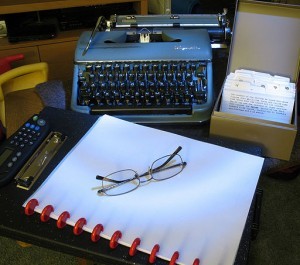
Source: WikiCommons
One of my cousins emailed me the other day. We’d talked briefly about publishing at the family reunion this past summer, but he wanted more information. While I’ve written a handy dandy book on the subject, I haven’t written a ton of shorter form work on self-publishing. So I thought I’d take the next couple of weeks and write about the self-publishing process.
So, if you want to publish a book, what’s the process like? It’s very simple and requires only four steps: (1) write a book, (2) get the book edited, (3) get a cover and (4) publish the book
That’s pretty much it. Now, if you want a writing career where you earn money, there’s generally more than that. You have to think long term strategies, marketing, pricing, social media, series or no series, book titles. Going in depth in the planning/strategizing process will greatly improve the chance of launching a monetarily successful book.
But, for the moment, let’s forget about the extra things we need to do to market and make money. Let’s just assume you have a story to tell, and you want it published in book form. If it earns cash, great. If not, that’s fine, too. So, let’s go over the actual steps you need to take to get your book published.
Write the book. This is the essential part of the process. Write your book and make it the best you can. Revise it several times, send it to others who you trust to get their feedback on it (these people are often called beta readers). These people will offer you honest advice on the book — on parts they think are boring, confusing or don’t make sense. With this feedback, revise the book until you’ve made it the best you think you can.
Edit the book. Once you’ve got your book as good as you can make it, it’s time to get it polished. You’ll need an editor. There are several types of editors, but I’ll mention two here: a structural editor and a copy editor. Structural editors, as the name suggests, look at the overall structure of your book and whether it works. They may suggest revising whole sections. Some people prefer to hire these editors before they write (in which case they’re called developmental editors). They’re looking at the macro level, the big picture. The copy editor looks at the final product, making sure your manuscript is grammatically correct. They’ll also look for thorny sentences and odd constructions and suggest revision. Generally editors are hired, and can cost a pretty penny (but we’ll talk about costs next week. In the mean time, let me just say, besides editing and cover work, you don’t need to pay anything to publish your book. And in some cases, you can get away with paying nothing to publish your book). If you can’t afford to hire an editor, people will often ask a good grammar-centric friend to edit their book. Then they’ll proofread it themselves again (reading it backwards can help you catch errors, presuming you’re pretty good at grammar yourself). Though, generally, a professional editor will get you a professional product.
Covers. Covers are important in that they’re the first glimpse at a book. The cover should be similar to those in the genre. What’s a genre? It’s just the term for the category of the book. Genres start off broad and then get more specific. So, romance, thriller and science fiction are all genres. Within those genres, you might have a psychological thriller, or erotic romance or dystopia (among sci fi). When you search the best seller lists at Amazon, you’ll see the genre on the side. Looking at those covers can help you see what covers in your genre look like. If you’re great with graphics, feel free to create your own cover. If you’re not great with graphics, feel free to create a cover concept. The concept is what you’d like it to look like (even if you don’t have the skills to do it). Your concept cover can be helpful if you hire a cover artists. Now, your cover should look professional and convey the spirit of your book. You can hire a cover artist, or you can get a pre-made cover. There are lots out there, including sites like this one.
Publish the book. Yep, step four is pretty simple, and all it requires is you follow the formatting and publishing directions of the website where you want to publish your book. For ebooks, you can publish directly to Amazon, Barnes & Noble, Kobo and Apple (if you have an Apple computer). There are companies referred to as either “distributors” or “aggregators” who can upload your book to multiple retailers (including Apple, if you don’t own an Apple machine). Ebook distributors include Smashwords and Draft2Digital (D2D, as it’s known, will also format your paperbook file). For a paperback book, you can use the company CreateSpace to publish your book. Simply follow their instructions for formatting your book, and then upload to their site. It costs nothing to do this yourself. Any of the sites where you plan to sell your book will want your banking and tax information before they let you publish. They want this so they can pay you if your books sales.
And that’s it. That’s the short, easy version of self-publishing. Now, when you get into the nitty gritty of it, there are some specific steps you have to take. In step 4, I mentioned that you’d need to format your book. People who would describe themselves as technologically challenged, often have trouble with this step. But, this is something you can hire someone to do. And that brings us to the topic of next week’s blog post: How Much Does it Cost to Self Publish? The short answer is nothing. However, there are some things that people do and, generally, should pay for. But we’ll talk about that next week. I the meantime, if someone tells you they can publish your book for just $1,200, run the other way.
Until next week…
-RJ Crayton
P.S. Don’t forget to vote for my novel Concealed in the Kindle Scout program. Books with enough votes and a favorable review from editors in the Scout program will be published by Kindle Press. If the book is selected for publication and you voted for it, Kindle Press will give you a FREE ebook copy of the book.
March 24, 2016
Vote for My New Book, Concealed, at Kindle Scout
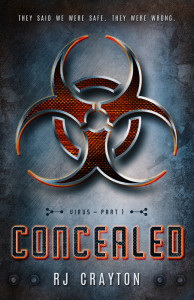
Please stop by and vote for my book at Kindle Scout. If selected by Scout, all those who voted will receive a FREE copy of the book.
I’ve decided to try something new with my latest book, Concealed. Rather than publishing it directly, I’ve entered it into the Kindle Scout competition. In it, readers can vote on the titles they’d like to see published. Amazon then examines the titles with the most support, reviews the editorial content and opts to publish a handful.
One of the main advantages of the Kindle Scout program, over self-publishing, is that Amazon gives the books it publishes some added support and marketing.
I’d love it if you stopped by and voted for my title (you need to be logged into your Amazon account–the one you use to purchase books/goods– in order to vote). The campaign website is https://kindlescout.amazon.com/p/17U6DZP8FHMSK. My campaign lasts 30 days, so I might run one more blog post toward the end requesting a little vote. As an added incentive, if you vote for my book AND if it gets selected for Kindle Press publication, you’ll get a FREE copy of the book when it publishes. So please stop by and vote by clicking the Blue “Nominate Me” button.
Alright, that’s it for today. Much love. And as always: be bold, be brave and be beautiful.
March 13, 2016
Self-Publishing Sunday: Early Impressions of My Free Run
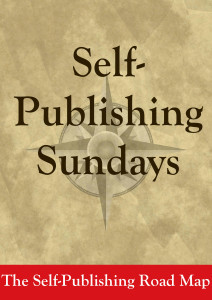 Free is a strategy talked about by indie authors all the time. There are some who hate it, and some who love it. Some are opposed to free, suggesting it devalues the author’s work. Having come from a journalism background and having been offered free stuff on multiple occasions, I’m not a believer in that. The same publishers/authors who claim free devalues work give out their work for free all the time. They’ve just decided to do calculated free –send free stuff to reviewers and perceived influencers (bloggers, journalists, etc.). The make-it-free-for-everyone strategy presumes everyone can be an influencer (whether they blog or not) and everyone can have a chance to sample the work.
Free is a strategy talked about by indie authors all the time. There are some who hate it, and some who love it. Some are opposed to free, suggesting it devalues the author’s work. Having come from a journalism background and having been offered free stuff on multiple occasions, I’m not a believer in that. The same publishers/authors who claim free devalues work give out their work for free all the time. They’ve just decided to do calculated free –send free stuff to reviewers and perceived influencers (bloggers, journalists, etc.). The make-it-free-for-everyone strategy presumes everyone can be an influencer (whether they blog or not) and everyone can have a chance to sample the work.
The free strategy works best if you have something for those who like your work to buy afterwards. So, having heard that series are great for free, and having toyed with the idea for the last six months, I decided to make Life First free at the beginning of this year. On Jan. 8, Amazon, price-matched the book, making it free.
It’s been just over two months since I made my book free, so I thought I’d check in with early impressions. So far, I think it’s a sound strategy. In the two months Life First, has been free, I’ve sold more copies of Third Life: Taken than I sold in all of last year. Now, admittedly, I wasn’t selling tons last year, and I’ve never done a promo for that book, figuring readers would be unlikely to start with the third in a series. However, I have been pleasantly surprised that the trickle of sales so far has added up. I’m close to matching the total sales numbers last year for Second Life, as well (I need 4 more sales).
While free is working better for me than non-free was, it is certainly no panacea. And if you want a one hundred percent honest assessment, I don’t think I’m doing great compared to those who excel at free. I’ll explain why. First, I’ve heard free should net you between a 10 and 20 percent sell-through rate to your other books. I’m not getting anywhere near that yet. However, I’m only two months into this, and I’ve heard that you really want to see where you stand at the six month mark. Why? Because free is a numbers game. Most people who download free books never read them. And some let them linger on their ereaders for months before picking them up. So, you’ve got to give away a ton of books. And, unfortunately, I’m not there yet.
With the ones I’ve given away, there are lots of people who haven’t cracked the e-cover. My goal is to try to get a steady giveaway rate, and see what happens when I get to the backstop of people who discover my book on the Kindle along with the people who read the book fairly soon after downloading it.
And, of course, that takes time. It also takes numbers, which I’m still trying to figure out how to get on a steady basis. I’ve posted on sites that are free to do promo and gotten some good download numbers, but it’s produced uneven numbers that aren’t super high. I haven’t yet done a paid promo with Life First. So, I’m going to schedule some ads for next month and see if I can get a sustained boost in giveaways, which will offer some trickle-down sales for the second and third books in the series. While I’m not perfect at this free thing, I’m very happy with how it’s going so far.
So what do you think of Free as a strategy? Yay, maybe, or never?
March 3, 2016
A trailer for Second Life
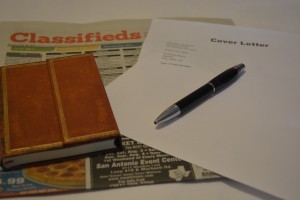
Thankfully, it didn’t come to this for my daughter. (Image source: Pixabay)
Second Life has a book trailer. My daughter made it for me. This is the story of how it happened:
Over the weekend, my darling daughter told me she wanted to set up a lemonade stand to earn some money. I told her that I’d read an article about the county cracking down on non-permitted lemonade stands. While a good idea, I noted it’s not as easy as it used to be to hang out a shingle. Then, we had the following exchange:
Me: Maybe I could hire you to do some stuff for my writing business.
Her: Oooh, yeah! (She jumps up) Let me get you my resume.
Me: (raising eyebrow) You have a resume?
Her: (bites lip, pauses) Yeah, as soon as you help me make one.
While I wouldn’t advise this job-seeking strategy with anyone but mom, it happened to work. I hired her. (A second piece of advice: Do not put on your resume that you’ll work for 25 cents per day — even with mom, as I seriously considered taking her up on it). Anyway, she was eager to do something. I told her I’d been too busy to make a Second Life trailer, so she picked that as her first duty. And here is the result.
P.S. I’ll take the blame for the lack of book cover image. She was ready to finish and I didn’t have time to walk her through formatting the book cover to fit in the YouTube space. But we can add it later.
February 29, 2016
Where did February Go?
I was thinking that I hadn’t posted to the blog in a while, so I thought I’d swing by and write a short post. Only, when I looked at the last blog post, it was Feb. 8. And now it’s the 29th (a bonus day; normally it’d be March).
I thought I’d pop in and say, “Hi.” I’ve been busy working on finishing my virus series. I anticipate releasing the first book in the series in May. I’m also working on a young adult novel called Scented. I’m still trying to determine a release date on that. But, the first draft should be finished by the end of this week. Yay!
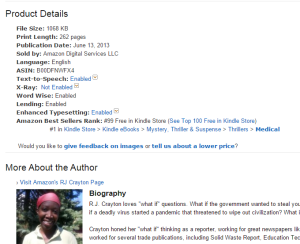 In other news, Life First had an unexpected rise in free downloads yesterday. I’m still learning the ins and outs of a FREE first in series. So far, I can say, I’ve earned more having the first free than having it cost money (through sales of the subsequent books). And yesterday, I had a huge spike in downloads and landed at No. 99 FREE in the whole Amazon store. I’ve dropped to No. 127 FREE in the Amazon store, but I’m not complaining.
In other news, Life First had an unexpected rise in free downloads yesterday. I’m still learning the ins and outs of a FREE first in series. So far, I can say, I’ve earned more having the first free than having it cost money (through sales of the subsequent books). And yesterday, I had a huge spike in downloads and landed at No. 99 FREE in the whole Amazon store. I’ve dropped to No. 127 FREE in the Amazon store, but I’m not complaining. 
I’ll try to blog more in the month of March. I’m sure it will be off to a great start.
February 8, 2016
What Kind of Reader Are You?
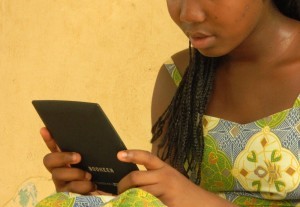 I saw an article the other day that referenced a study showing when readers quit reading a book. The point of the article was to tell authors they needed to hook readers early, otherwise readers quit. While that’s certainly important info, I was fascinated by another part of the article: the chart that showed what percentage of readers read each chapter of the book .
I saw an article the other day that referenced a study showing when readers quit reading a book. The point of the article was to tell authors they needed to hook readers early, otherwise readers quit. While that’s certainly important info, I was fascinated by another part of the article: the chart that showed what percentage of readers read each chapter of the book .
The way the study worked was that several readers were given ereaders and a selection of books to read. The ereaders recorded at what points in the books readers stopped. In a study like this, one would expect the reader drop-off rate to be fairly steady. Let’s say it was a 10-chapter book. You might expect 90 percent of readers to finish chapter 1, maybe 85 percent to finish chapter 2, 80 percent to finish chapter 3, and by the time you got to chapter 10, you’d be at 40 percent, which is considered a decent completion rate.
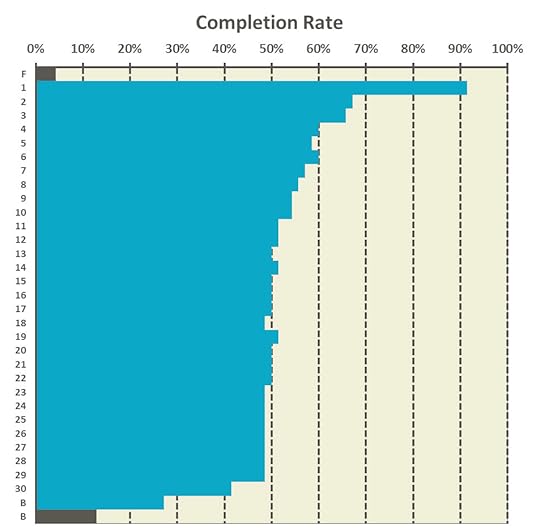
See the study at Digital Book World
Instead, the Digital Book World Study had a chart that showed roughly 60 percent of the readers making it through chapter 4. Then the readers drop off slightly, with about 57 percent reading chapter 5. And here’s where it got interesting for me. At chapter 6, we were back up to 60 percent reading that chapter. My only thought was people got bored in chapter 4 and decided they’d skip ahead a chapter and see if it got better. It apparently didn’t for some, because chapter 7 has what looks like a 55 percent read through rate.
So, I asked some friends about this, and several of them said they would (if they were getting bored but had liked what they’d seen early on) skip ahead to see if the book got better. This is the complete opposite of me, as I’m pretty much done when I’m done. If I’ve decided to stop, I’m just going to stop. Now, I’ll give a book a fair amount of time, but I don’t do second chances.
Given this study, I thought I’d ask what type of reader are you?
Quick, dirty and decisive. You give a book ten pages or less and you’ve made a decision. The writer must grab you now or it’s not going to happen.
The cynic. You’ll give a book three to six chapters, but after that, if you’re not hooked, you’re pretty confident it’s not going to happen.
Skippy. You’ll give the book a few chapters, and then if it’s not floating your boat, you’ll skip ahead to see if the later chapters are worth sticking around for.
The almost eternal optimist. You’ll read 75 percent or more of the book, thinking it will get better, before you finally give up.
Mama Didn’t Raise No Quitter. You finish every book, no matter. You may grumble, you may 1-star it, you may tell everyone you know not to get it, but you’re gonna finish that sucker.
Now, I’ll admit, you can fall into more than one category, depending on the book, I think. For example, if someone recommends a book I was hesitant on in the first place, I’m quick, dirty and decisive. If it’s a book I was really looking forward to, I probably fall in the Mama Didn’t Raise No Quitter category. I wanted to read the book, so I’m going to try to prove to myself that I should have. I’d fall in the same category if it was a serial series I started and liked. If I liked book 1, and it’s only a three or four book series, I’ll slog through the rest of the series to find out what happened to the characters I loved in book 1. However, in most cases, I’m the cynic. I’ll give it a decent amount of time, and then bail if it’s not working.
So what kind of reader (or combination) are you?
February 1, 2016
Some Diverse Books for Black History Month
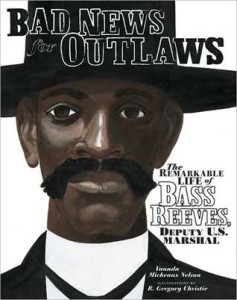
We really enjoyed this book last year.
Happy February to you. It’s a good year because you’ve got one extra day in the month this year. Leap Year’s are awesome.
February is also Black History Month. Last year, my friend Rebecca posted on Facebook that she was reading a different book to her kids each night for Black History Month. I thought it was such a great idea I copied it. My books from last year are on my Pinterest page. I’ll add more this year. The first will be my friend, Monica Fortune’s book, Who’s Birthday Is it. It’s an indie book, as well as diverse. I don’t have my entire list yet, but check the page as the month goes on to see what I end up posting.
If you’re looking for some adult books for Black History Month, I found this great list of a 100 books online.



